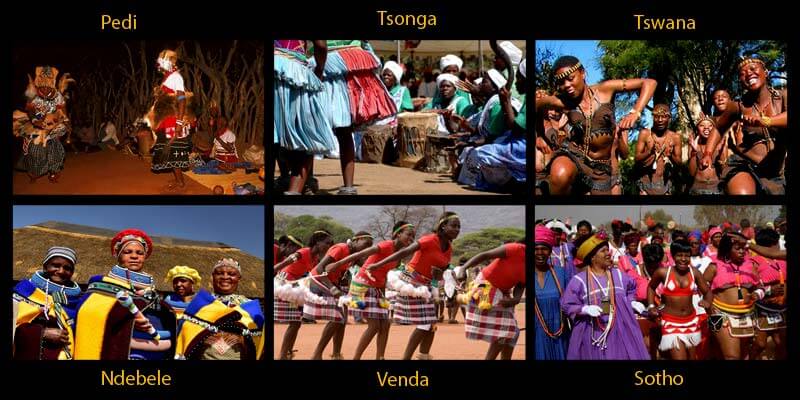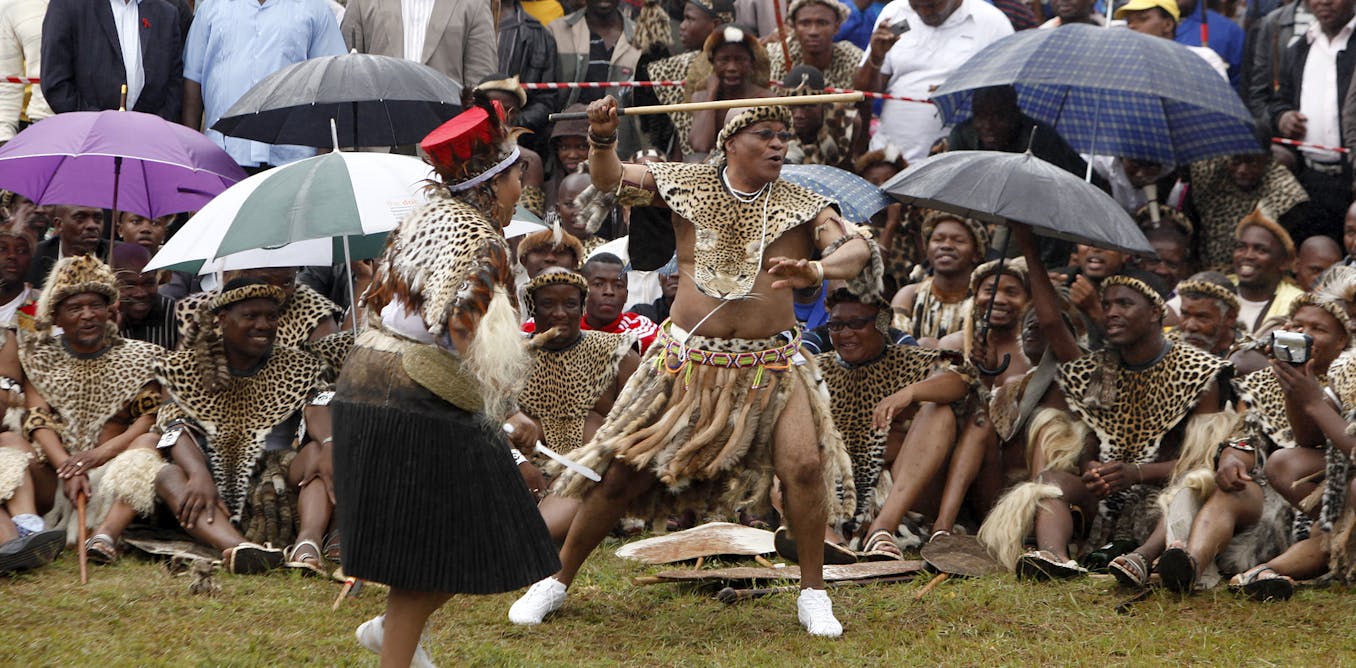The Definitive Guide for South African Culture Today
Table of ContentsSome Ideas on South African Culture Today You Should Know9 Easy Facts About South African Culture Today ShownThe Of South African Culture TodayThings about South African Culture TodayThe 45-Second Trick For South African Culture TodaySouth African Culture Today - Truths
An issue of importance in Zambian towns is the passing away of enjoyed ones. All participants of the town placed money, time and effort together for the burial of the deceased.Music and dancing is a really crucial element of the Zambian culture. The numerous tribal systems have their own dancing types; however, makishi is common among all tribes.
Some Known Factual Statements About South African Culture Today
When it involves songs, drums are used the most, with a selection of drumming events. In Zambia, bulk of the people are Christian; Protestant and Roman Catholic. There are small groups of Muslims and Hindus, with the rest complying with local native tribal beliefs.

South African heritage and society is tremendously varied, and includes various groups of individuals who each have their very own practices and beliefs. Having such a variety of people and cultures is what makes South Africa so distinct. In real feeling of the phrase, we are a rainbow country.
South Africa has around 3 hundred thousand Portuguese people staying in it. Making it the 7th on the checklist of nations with one of the most Portuguese people in it outside of Portugal. Portuguese is not just a society, yet it is additionally a language and a race. Portuguese people stem from the country of Portugal in Europe, nevertheless, because of Portugal (like many other nations in Europe) discovering the globe and conquering various other countries throughout the 15th 20th centuries, South Africa has what we call Portuguese South African's living in it.
The smart Trick of South African Culture Today That Nobody is Discussing
Among the noticeable features of the topography is a plateau that covers nearly two thirds of the center of the nation. The plateau complicated climbs towards the southeast, where it culminates in the Drakensberg array, part of a cliff that divides the plateau from the coastal locations. The Drakensburg includes Sparkling wine Castle, the highest possible height in the nation.
The area north of the Witwatersrand, called the bushveld, slopes downward from eastern to west toward the Limpopo River, which develops the international border. The western area of the plateau, the middleveld, additionally descends towards the west and differs in altitude in between the highveld and bushveld. Between the Drakensburg and the eastern and southern shoreline, the land comes down to the sea.
Nearer the coast there is a low-lying level called the eastern lowveld. Southwest of the plateau the nation comes to be progressively much more dry, giving method to the stony desert of the Great Karroo, verged on the east by the lower, better sprinkled plateau of the Little Karroo. Separating the completely dry southern interior from the sandy coastal of the southerly shore and West Cape is another range, the Langeberg.
About South African Culture Today
The nation's racially, ethnically, and politically separated background has produced nationwide and subnational symbols that still work as signs of the nation, and others symbols that are approved only by particular groups. The monuments to white settler conquest and political dominance, such as the Afrikaner Voortrekker ("pioneer") Monolith in Pretoria and the Rhodes Monument recognizing the British colonial empire contractor and Cape prime priest Cecil Rhodes, stay sectarian signs.
The very first contemporary residents were the San ("bushman") hunter-gatherers and the Khoi ("Hottentot") individuals, who rounded up animals (South African culture today). The San might have been existing for hundreds of years and left proof of their existence in countless ancient cavern paints ("rock art"). Bantu-speaking clans that were the forefathers of the Nguni (today's amaZulu, amaXhosa, amaSwazi, and vaTsonga peoples) and Tswana-Sotho language teams (today's Batswana and Southern and Northern Basotho) migrated below eastern Africa as early as the fifteenth century

The 2 former republics of the Orange Free State and Transvaal (South African Republic) were developed by Afrikaner settlers that beat and dispossessed the Basotho and Batswana. Lesotho would have been forcibly included right into the Orange Free State without the extension of British security in 1869. The supreme unification of the country arised from the South African Battle (18991902) between the British and both Afrikaner republics, which reduced the nation to wreck at the beginning of the twentieth century.
Afrikaners traditionally considered themselves the just real South Africans and, while granting complete citizenship to all homeowners of European descent, refuted that status to people of shade till the autonomous change of 1994. British South Africans preserve a feeling of social and social link to Great Britain without damaging my sources their identification as South Africans.
Some Ideas on South African Culture Today You Should Know
The diversity and fragmentation within ethnic groupings and the equilibrium of tensions in between those groups throughout the twentieth century prevented interethnic civil problem. While intergroup tensions over sources, entitlements, and political dominance continue to be, those disputes are as most likely to match Zulu against Zulu as Zulu versus Xhosa or African against Afrikaner.
From colonial India, British merchants and managers brought the curved steel ornamental roofs and slim lace job pillars that still typify the terraces of homes in the areas and cities throughout the country. Holy places contribute a vital architectural facet even in the tiniest towns. In enhancement to the soaring steeples and traditional stonework of Afrikaans Dutch Reformed churches, Anglican churches, synagogues, mosques, and Hindu temples supply variety to the religious building scene.

Butchering and the brewing of traditional cereal beer are vital in protecting the engagement and a good reputation of the forefathers that are taken into consideration the guardians of good luck, prosperity, and well-being. Indian communities maintain their native culinary traditions and use them on Islamic and Hindu ritual and ritualistic celebrations. Afrikaners and Coloured people collect at weekends and special occasions at multifamily barbecues called braais, where area bonds are reinforced.
Due to the fact that this was the key financial business of both black Africans and white colonists, conflict between those teams fixated the property of grazing land and animals. In 1867, the largest diamond deposits in the globe were uncovered at Kimberley in the west central area. The wealth from those areas assisted finance the exploitation of the biggest gold reef on the planet, which was uncovered on the Witwatersrand in 1886.
South African Culture Today - Truths
This resulted in misconceptions and calculated misrepresentation in the dealings of white inhabitants and government authorities with African principals during the early american period (South African culture today). In the facility of African reserves, some elements of communal and mainly "tribal trust" land period were maintained, and even in white backwoods, types of public tenure were still exercised in areas with African neighborhoods
After the autonomous change of 1994, programs for land restitution, redistribution, and reform Learn More were set up, but development has actually been slow. The white minority still controls eighty percent of the land. In the wake of agricultural land intrusions in Zimbabwe, the Division of Land Matters has actually pledged to speed Read Full Article up land redistribution.